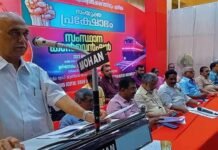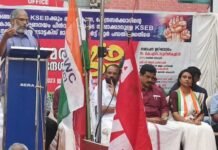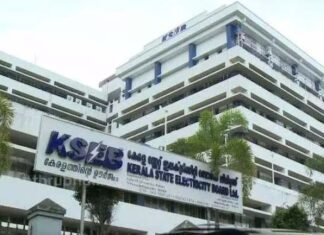Energy Demand and Market updates:
According to the power demand data published by the National Load Dispatch Center, during May’22 the energy consumption at 136 BU saw 23% YoY growth while the national peak demand at 204.45 GW saw 21% YoY growth. During June’ 22 the energy consumption at 134 BU saw 17% YoY growth on a high base while the national peak demand at 212 GW saw 11% YoY growth.
The Indian Energy Exchange achieved 7596 MU of electricity volume in May’22 comprising 6680 MU in the conventional power market, 642 MU in the green power market, and 275 MU (2.75 lac Certificates) in the REC Market, registering 16% YoY growth across all the market segments. In June’22 the Indian Energy Exchange achieved 8267 MU volume comprising 7058 MU in the conventional power market, 536 MU in the Green Power Market, and 673 MU (6.73 lac Certificates) in the REC Market, registering 17% YoY volume growth across all market segments.
Reforms/Regulations:
The Central Electricity Regulatory Commission (CERC) has issued the Connectivity and General Network Access (GNA) to the Inter-State Transmission System (ISTS) Regulations, 2022. The rules specify the application for grant of connectivity and GNA, eligibility for connectivity to ISTS, application for grant of connectivity, among others.
The Regulation has brought a major change by removing the open access concept. In the new regime, the need for applying for open access (Long Term, Medium Term and Short Term) for drawing power from generating stations/Power exchange outside the State is dispensed with. In the new regime, entities have to apply for General Network Access for a quantum corresponding to the drawal from Inter State Transmission System. Power from any contracts can be drawn in this GNA quantum and transmission charges are payable for the GNA quantum. No transmission charge waiver for solar and wind. Power from any contracts can be drawn within the GNA quantum and transmission charges are payable corresponding to the GNA quantum. The deemed GNA quantum of Kerala is 2679MW.For enhancing deemed GNA quantum, application to be made within 3 months.
The Central Electricity Regulatory Commission (CERC) has issued the draft CERC (Sharing of Inter-State Transmission Charges and Losses) (First Amendment) Regulations, 2022. Under the Principal Regulations, the Yearly Transmission Charges (YTC) were to be shared by drawee Inter-State Transmission System (ISTS) customers of the receiving region and designated ISTS customers with untied Long-Term Access (LTA) in the receiving region, in proportion to the quantity of LTA plus Medium-Term Open Access (MTOA) and untied LTA, respectively. As per the amendment proposed, YTC will be shared by drawee ISTS customers of the receiving region in proportion to their quantity/quantum of General Network Access (GNA).
The Central Electricity Regulatory Commission (CERC) has issued directions to the power exchanges registered under the Power Market Regulations, 2021 to extend the price ceiling of Rs 12 per unit in all market exchanges of power exchanges by three months.
In May 2022, the CERC has directed the power exchanges to redesign their software in such a way that members can quote price in the range of Rs 0-12 per kWh in day ahead market (DAM) (including green DAM (GDAM)), real-time market (RTM), intra-day, day ahead contingency and term ahead market (TAM) (including green TAM (GTAM)) contracts. The said order was applicable till June 30, 2022. Based on the assessment of demand-supply position in the power sector, it is felt that the high demand for electricity is likely to continue over the next few months due to increase in economic activity, high agricultural load on account of sowing of kharif crops, and increase in household demand. The power supply position has improved over the last couple of months but the increasing trend of demand might put pressure on market prices once again without commensurate increase in supply in the power exchange market. In order to protect consumer interests, the commission has decided to extend the applicability of the order till September 30, 2022. Accordingly, for the period from July 1, 2022 to September 30, 2022, the power exchanges will continue to operate their software in such a way that members can quote price in the range of Rs 0-12 per kWh in DAM (including GDAM), RTM, intra-day, day ahead contingency and TAM (including GTAM) contracts.
The Central Electricity Authority (CEA) has notified the draft Central Electricity Authority (Flexible operation of thermal power plants) Regulations, 2022.
The regulations will apply to all coal and lignite based thermal power plants (TPPs) and load despatch centers (LDCs). As per the draft, all TPPs will be capable of providing the required output as per the schedule for generation finalised by appropriate LDCs. Based on the availability of must run stations, plants or units will follow the variable load requirements. The appropriate LDCs will schedule all coal based TPPs, upto the minimum power levels (MPL) of 55 per cent, to support the operation of must run stations. The appropriate LDCs may schedule all coal based TPPs, up to the MPL of 40 per cent, to support the operation of must run stations. The minimum rate of loading or unloading for coal based TPPs will be 3 per cent per minute above the MPL, provided that for supercritical and ultra-super-critical units, minimum rate of loading or unloading will be 5 per cent per minute above the MPL. The comments have been sought on the draft by August 26, 2022.
Economic Aspects:
Some of the Maharashtra State Electricity Distribution Company Limited (MSEDCL) residential consumers will now have to pay an additional of at least Rs 2 per unit every month for the next five months, depending on consumption, with power utility firms announcing fuel adjustment charges (FAC). The FAC levied for consumption of 301-500 units of electricity will be Rs 2.05 per unit and it will be Rs 2.35 for units over 500. The minimum monthly bill for some high-end consumers will be as high as Rs 7,500.
The World Bank has approved an additional $165 million financing to support 450 MW of rooftop solar deployment in the residential sector of India and make solar energy more affordable. These solar photovoltaic (PV) installations will provide clean, renewable energy, and reduce greenhouse gas (GHG) emissions by displacing generation based on fossil fuels. The project is projected to reduce GHG emissions by 13.9 million tonnes. The development bank has previously given India’s grid-connected rooftop solar program, which primarily focuses on commercial and industrial rooftop PV systems, $648 million. This additional round of funding will expand the programme to cover the residential sector, and support the government of India’s target of 40 GW of rooftop solar installations.
Indian Renewable Energy Development Agency Limited (IREDA) is committed to increasing participation of micro, small and medium enterprises (MSMEs) in renewable sector by offering loan facilities. IREDA is attempting to address the issues of MSMEs in order to increase their participation in renewable energy sector, as MSMEs only represent 1.86 per cent of the company’s total loan assets of Rs 338.84 billion as on May 2022. Moreover, the target of 500 GW of renewable energy capacity by 2030 cannot be achieved without the considerable participation of MSMEs.
Major developments in Generation/Transmission/Distribution:
The proposed second phase expansion of Idukki hydel power project has received the preliminary clearance from the Ministry of Environment and Forest (MoEF). The project plans to generate an additional 800 MW using water from the existing reservoir. Idukki dam has the capacity to generate 2,000 MW power. The existing generating station can generate 780 MW. The new powerhouse plans would house four generators of 200 MW capacity each. Kerala State Electricity Board plans to complete the project by 2028.
Bharat Heavy Electricals Limited (BHEL) has commissioned 100 MW floating solar photovoltaic (PV) plant at NTPC Ramagundam in Telangana. The plant is installed across the natural raw water reservoir, saving valuable land resources, and also conserving water by reducing evaporation. All major components of the solar plant – solar PV modules, floaters, biodegradable natural ester oil filled inverter-duty transformers, switchgear, supervisory control and data acquisition and cables are indigenous, contributing to the government’s Make in India mission. With this, BHEL has achieved the unique distinction of commissioning 3 floating solar projects – 25 MW at NTPC Simhadri, 22 MW at NTPC Kayamkulam and 100 MW at NTPC Ramagundam – in the last 10 months.
The Energy department of Maharashtra has signed a memorandum of understanding (MoU) with Adani Group to bring 11 GW green power to the state in the next five years. The project would entail an investment of Rs 600 billion. Reportedly, according to the agreement, Adani Group will set up pumped storage projects (PSP) in the next four to five years. The state will reap many benefits from PSPs which will generate or store electricity with the help of non-conventional energy sources.
Delhi’s Indira Gandhi International Airport (IGI) has signed a long-term power purchase agreement with a Himachal Pradesh-based hydropower producing company for the supply of hydroelectricity till 2036. With this development, IGI Airport has become the first airport in India to run entirely on hydro and solar power as it switched to renewable sources for its energy needs. This move will help in reducing 0.2 million tonnes of carbon dioxide emissions per year. Already, approximately 6 per cent of the airport’s electricity needs are met using onsite solar power plants. These solar power plants are located on the airside and on the roofs of the cargo terminals of IGI Airport. From June 1, 2022, Delhi Airport has adopted hydropower energy for its demand of the remaining 94 per cent, thus ending its dependency on non-renewable power.
Tata Power has planned to spend over Rs 750 billion in the next five years in its renewable energy business. Further, the company plans to increase its green energy share from current levels of 34 per cent to 60 per cent by 2027 and 80 per cent by 2030. The company has planned a Rs 140 billion consolidated capex in 2022-23 with Rs 100 billion in renewables. Tata Power added renewable energy capacity of 707 MW during 2021-22. The company holds strong engineering, procurement, and construction (EPC) order book of Rs 130 billion and is also setting up a 4 GW solar cell and module manufacturing capacity in Tamil Nadu with an investment of around Rs 30 billion.
New Initiatives:
NTPC Renewable Energy Limited (NTPC REL) and Gujarat Alkalies and Chemicals Limited (GACL) have a signed a memorandum of understanding (MoU) to realise green energy and green hydrogen objectives and the Government of India’s efforts towards carbon-neutral economy.
The MoU envisages collaboration in the field of renewable energy, green methanol and green ammonia and mutually explore the opportunities for the supply of 100 MW renewable energy- round the clock power and synthesising 75 tonnes per day (tpd) green methanol and 35 tpd green ammonia for captive use for production of various chemicals by GACL at its Vadodara and Dahej complex in Gujarat. This would be the first commercial scale green ammonia and green methanol project in the country and align with the vision for Atmanirbhar Bharat.

























